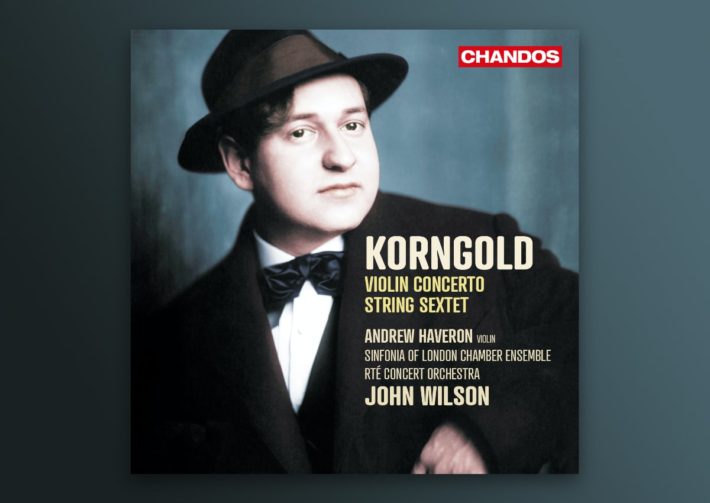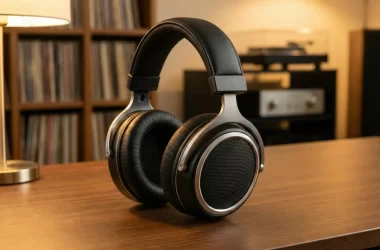Erich Wolfgang Korngold wrote his Op. 10 Sextet in 1915 when he was just 18. The piece reflects a composer skilled in multiple styles but seeking to reconcile them. We hear elements from the Classical Era in a first movement’s fugue and late Romanticism in a Brahmsian complexity; but, what we also hear are dissonances that consistently punctuate a more conventional harmony. There is also a hint of the language that would predominate Korngold’s film music and later works such as the Violin Concerto.

The Sinfonia of London Chamber Ensemble delivers a spirited performance, with several movements standing out. The Moderato is well-balanced with an excellent performance from the lower strings. They provide just the right amount of power to complement their upper counterparts, while still allowing the delicateness of the violins to come through even in the most intense sections. The performers also show the melodic sophistication with which Korngold writes. Individual lines are interwoven throughout and the ensemble certainly pays attention to this, allowing each instrument outside of the upper strings to have their moments.
The Adagio (which was actually composed first) speaks very much to Korngold’s stylistic quest: the underlying conflict between romanticism and modernism is what gives the movement both its tension and profundity. Amidst a rich and colorful harmonic language, we hear a performance that is highly expressive yet meditative. Notable is the ensemble’s excellent bow control (1’41” onward), with voicing that is diaphanous yet so clear across all parts. The Intermezzo opens delightfully with its playful charm but also has its bursts of stormy passion. Worth mentioning are the pizzicatos (4’00”-4’21”), which are both executed and harmonized masterfully and give the performance its uplifting nature (also helped by an exemplary recording quality).
Written nearly 30 years after the sextet, Korngold’s Op. 35 Violin Concerto shows the mature and unique sound of a composer, one that effectively amalgamates the film and classical idioms. The first movement is lush and romantic, easily reminiscent of a 1930s film. violinist Andrew Haveron has some lovely phrasing from the start, such as the nuanced opening where he pushes forward and holds back; this fluidity is what makes his entrance thoughtful and lyrical, inviting us into an imaginative story. What would make this opening even better, however, is a little more richness of sound. The violin does sound regretfully thin at times, especially when the orchestra has more movement in its part. The version one must mention here is by Jascha Heifetz, who premiered the piece, on his 1953 recording with the LA Philharmonic. His vibrato in the opening is not faster per se, but is certainly more pronounced, lending his playing the thick luxuriousness the melody calls for. What Haveron does so well throughout the rest of the movement, however, is to evoke the instrument’s many different characters. The lyrical melodies plead and beckon us to listen further, while the atonal angularity surprises us. The RTÉ Concert Orchestra under John Wilson is wonderful, providing a vivid backdrop that supports the soloist and brings to life the sweeping expansiveness that the composer called for. Korngold did score this for a larger than usual orchestra, and this power and depth are evident in this interpretation.
The second movement takes us to a dreamy and gentle place, but without losing any emotional intensity. Haveron’s small glissandi in the opening bring forth a longing, almost pensive quality to the melody. He has a better overall presence in this movement as well, with a resonance in both lower and upper register playing that was not as prevalent in the first movement. In particular, there is better vibrato and bow control; where the instrument had a tendency before to sound shrill during extended periods of upper register playing, the high notes here are much rounder.
The final movement evokes a scene of adventure. The performers capture the spirit of imagination and fun that are so central to its vibrance. Haveron’s impressive technique (specifically both his arco and pizzicato articulation) is on full display here, but not for its own sake: instead, he uses this energetic virtuosity to bring an eagerness to the movement. The orchestra, too, is buoyant in its interludes, and Wilson’s well-calibrated balance allows the interesting instrumentation to come through.
The liner notes are well-curated, combining insightful musical analysis with interesting biographical context that helps us better understand these works. This is a fine release indeed and well worth an appreciative listen.
Korngold – Violin Concerto, Op. 35, Sextet, Op. 10
Andrew Haveron – Violin
RTÉ Concert Orchestra
Sinfonia of London Chamber Ensemble
John Wilson – Conductor
Chandos, CD CHAN 20135




















